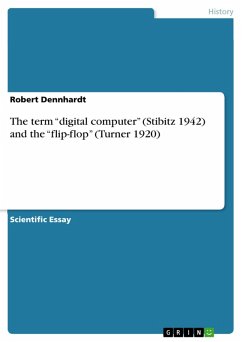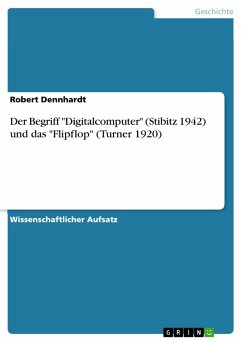Scientific Essay from the year 2008 in the subject History - Miscellaneous, grade: 1,1, Humboldt-University of Berlin (Herlmholtz-Zentrum für Kulturgeschichte), course: Technikgeschichte, language: English, abstract: Why do the terms digital and therefore digital computer seem to be so problematic? In all literature dealing with computer history, there is a certain indifference concerning the differently scaled function descriptions and terminologies of individual parts or the entire computer and its analogue, discreet or digital properties. "Digital" and "digital computer" was first used by George Robert Stibitz in 1942." (Ceruzzi/Aspray 1990) So far, no author was able to state a direct source. In his closing report Report on electronic predictors for anti-aircraft fire control from 1942 about a computer-assisted anti-aircraft system Stibitz' pointed out the fundamental advantages of merely having to program and compute two discreet voltage levels. There is a reference to this technical and historical gap, for example, in the first volume of the Encyclopedia of Computers and Computer History by Raul Rojas from 2001. It should however be possible to find at least a circuit directly succeeding the "trigger relay" from 1919 or a first application. Indeed, an early mention of the onomatopoetic name "flip-flop" can be found in A. T. Starr's essay "A Trigger Peak Voltmeter Using »Hard« Valves" from 1935. In April 1920, around six months after the trigger relay essay was published by Eccles and Jordan, Laurence Beddome Turner presented his so-called "Kallirotron, an Aperiodic Negative-Resistance Triode Combination".
Dieser Download kann aus rechtlichen Gründen nur mit Rechnungsadresse in A, B, BG, CY, CZ, D, DK, EW, E, FIN, F, GR, HR, H, IRL, I, LT, L, LR, M, NL, PL, P, R, S, SLO, SK ausgeliefert werden.









